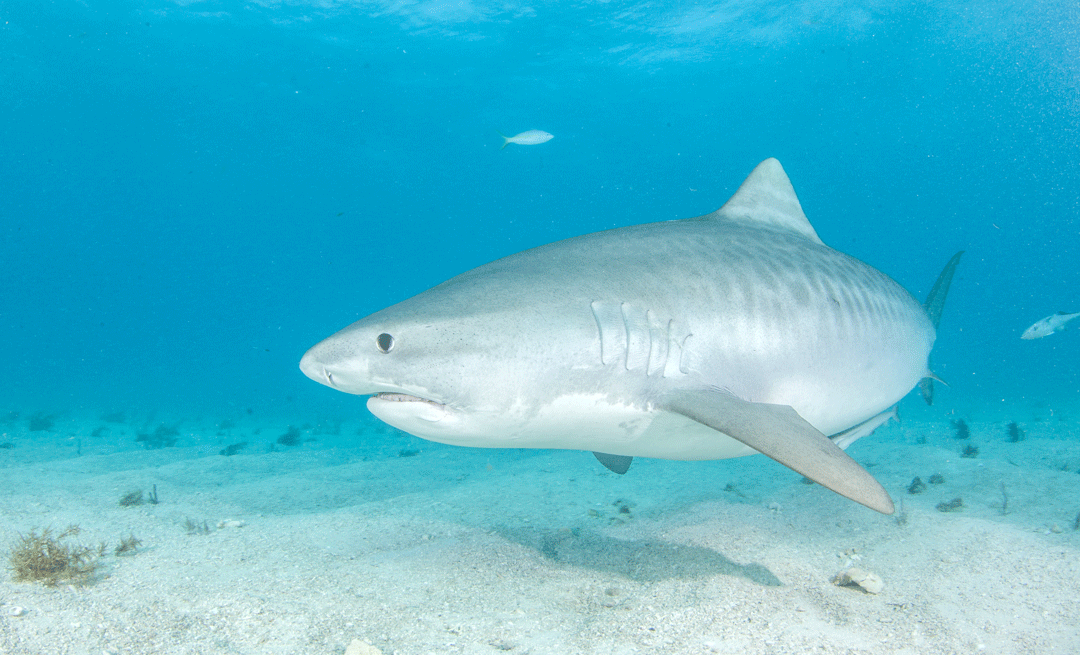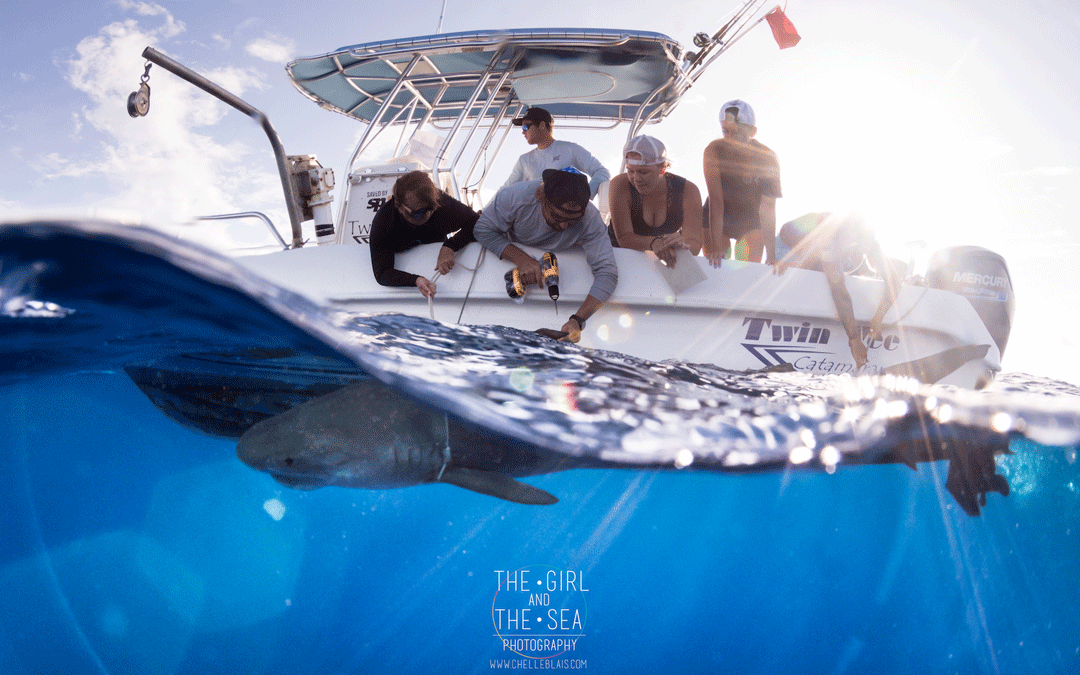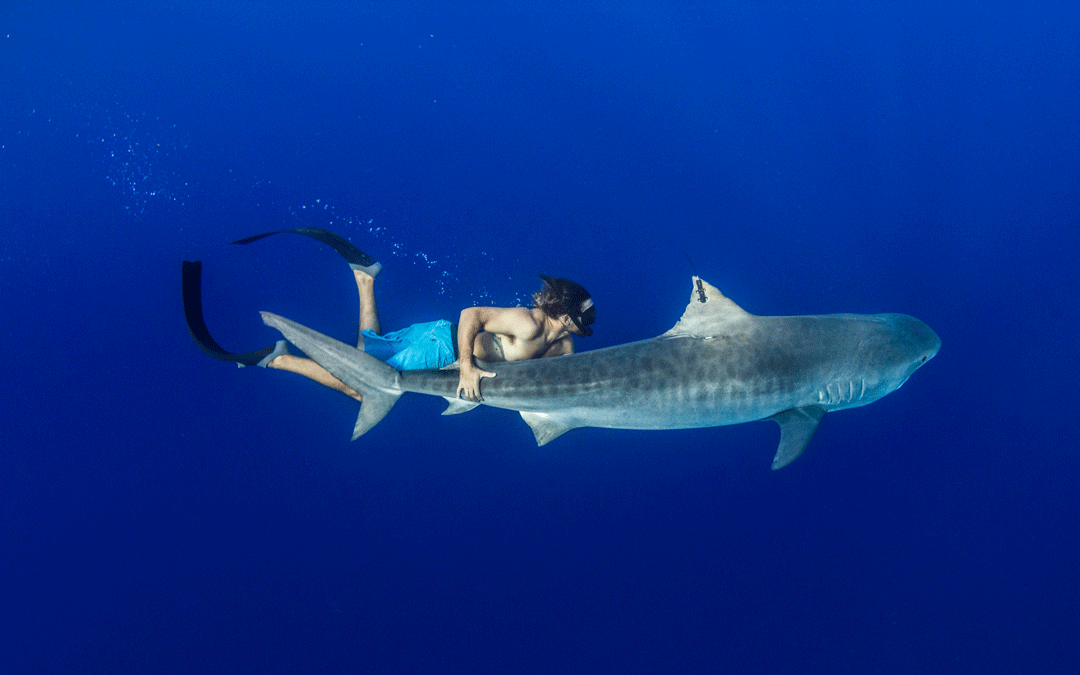Lightning Strikes Twice – 1000 ft deep
Tiger sharks maybe some of the most adaptable sharks found in tropical and temperate waters. They are capable of utilizing diverse habitats, have a broad diet, and travel great distances. This adaptability means they have large home ranges and are not constrained to a particular location. Given these large home ranges, recapture rates of tiger sharks, especially the highly mobile adults, are relatively low. Any chance at a recapture is important for assessing growth, survival and residency to habitats.

Photo © Michael Bogner | Shutterstock
Working in the deep waters (greater than 1 000 ft) off Bimini, Bahamas presents many challenges including strong currents, rough seas, and a plethora of potential entanglements on the ocean floor. However, these waters are also highly productive and offer a chance for catching enormous tiger sharks. In August 2011, while conducting deepwater surveys, the Bimini Sharklab caught a 3.5 meter (11.5 feet) total length tiger shark. The shark was quickly measured, tagged, and biological samples collected before she was released into the deep blue water of the Gulf Stream. This size of tiger shark is typically thought to have a predominately nomadic lifestyle, traversing thousands of kilometres of open ocean each year.

Fitting a tiger shark with a fin mounted satellite tag (SPOT). Photo by Chelle Blais
In June of 2018, while conducting deepwater surveys in the same area, Sharklab staff pulled up a large tiger shark. However, this shark immediately caught our attention. At the base of the dorsal fin was a small yellow National Marine Fisheries Service dart tag. Recaptures for tiger sharks are rare, but in deep water, they are especially unique. Knowing this was a large and unique female shark, we decided she was a prime candidate a fin mounted satellite tag (SPOT) and a 10-year acoustic transmitter. She was scanned with an ultrasound and determined to be post-partum and had likely recently pupped in the shallow waters surrounding Bimini. Upon returning to the field station, a quick search of our database revealed she had been caught in the same locations (at ~1,000ft deep) nearly seven years prior.

Project leader Matt Smukall releasing the tiger shark after she was tagged. Photo by Chelle Blais
Outfitted with the SPOT and acoustic tags, she has been tracked for the past year. She remained close to the island of Bimini for the first 10 months post-release, potentially using the resources of the Bahamas to restore energy stores following pupping. In early summer 2019, she began a southward migration leading to the northern coast of Venezuela. Most recently she has been detected moving northward past Bermuda. These open ocean movements have previously been hypothesized to be driven by mating. It will be intriguing to determine where she goes over the next year and if she returns to Bimini for another pupping season. This information will shed light on the importance of Bimini in the life history of this highly mobile species.

Movements of the tagged tiger shark. Map generated from Wildlife Computers using Google Earth.
